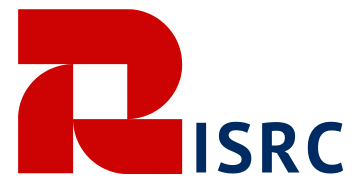Table of Contents
- The Connection Between Dental and Vision Health
- Oral and Ocular Health as Windows to Whole-Body Wellness
- Prevention: A Shared Priority
- Beyond Benefits: The Role of Lifestyle Choices
- Impacts on Productivity and Daily Life
- What Comprehensive Coverage Looks Like
- Simple Steps to Prioritize Your Dental and Vision Health
The Connection Between Dental and Vision Health
Many people see dental and vision health as two distinct aspects of wellness, separated by specialty and seemingly unrelated conditions. Yet, there is a compelling connection between maintaining healthy teeth and clear eyesight. Increasingly, healthcare providers and insurers recognize that problems in the mouth or eyes can signal broader concerns throughout the body. Regular exams allow professionals to spot those early signs—like inflammation, unexpected changes, or signs of chronic disease—that are often missed until they become more serious. This interconnected view changes how we think about preventive healthcare and personal wellness.
Access to essential benefits, such as FEDVIP dental insurance, is crucial in making preventive care routine. When dental and vision insurance is accessible and easy to use, more people take advantage of professional care before problems escalate. Bundling these benefits helps families support their wellness on several fronts at once, encouraging a rhythm of routine checkups rather than sporadic or crisis-driven visits. The link between dental and vision coverage is clear: they significantly improve the odds that health issues will be noticed and addressed in time.
Oral and Ocular Health as Windows to Whole-Body Wellness
Teeth and eyes are more than just vital for smiling or seeing—they’re critical areas where the signs of systemic diseases or chronic conditions first appear. Physicians and researchers now rely on oral and ocular health as early indicators for heart disease, diabetes, high cholesterol, and autoimmune conditions. For instance, gum disease is closely associated with cardiovascular health, while eye doctors may be able to spot tiny leaks in blood vessels indicating undiagnosed diabetes or high blood pressure. Oral health conditions frequently overlap with other chronic diseases, revealing how medical issues do not exist in isolation.
This underscores why ongoing care in these two areas is much more than fixing a cavity or updating a glasses prescription. Instead, every visit allows professionals to monitor changes that could reflect evolving problems elsewhere. Patients are often the first to learn about their risk for significant health conditions through the tools used in dental clinics or the special imaging instruments at the optometrist’s office. The more proactive people use their dental and vision benefits, the greater their chances of benefiting from this early warning system, ultimately protecting their overall quality of life.
Prevention: A Shared Priority
Prevention is the backbone of modern healthcare and insurance, and dental and vision coverage are leading the way in promoting it. Numerous peer-reviewed studies demonstrate that people who maintain routine appointments—empowered by reliable insurance—are much less likely to develop advanced forms of disease. By the time pain or discomfort becomes apparent, conditions like periodontal disease, cataracts, or undiagnosed diabetes may have already progressed. The National Institutes of Health (NIH) highlights links between severe gum disease and a greater risk for type 2 diabetes, suggesting that timely dental care could offer stronger protection against chronic illness.
Investing in prevention, supported by accessible insurance, means that health concerns are caught soon enough for interventions to be easier, less invasive, and less expensive. This preventive cycle gives people control—and peace of mind—about their health yearly.
Beyond Benefits: The Role of Lifestyle Choices
While substantial insurance benefits like dental and vision coverage can open doors to care, their impact is maximized by the habits we create every day. Daily brushing, flossing, limiting sugary foods, eating nutrient-rich meals, wearing UV-protective sunglasses, and resting your eyes from screens all reinforce the foundation of professional care. Insurance allows medical costs to be kept down, but lifestyle choices fill the gaps between checkups and procedures. By working on both sides—taking full advantage of coverage and fine-tuning habits—people are far more likely to stay ahead of major oral and ocular health issues. These actions can significantly reduce the risk of tooth decay, gum disease, long-term vision problems, or other complications that may impact daily comfort and quality of life.
Impacts on Productivity and Daily Life
Oral pain and vision problems rarely go unnoticed in daily routines. Not only do they cause discomfort, but they can also significantly hinder one’s ability to work, learn, and engage with others. Oral health issues lead to millions of lost work and school hours each year, resulting in increased stress and fewer opportunities. Unaddressed vision problems cost the U.S. economy billions of dollars in lost productivity due to absenteeism and decreased workplace efficiency. Even the most basic tasks—such as reading, driving, having conversations, or maintaining focus—become more difficult when dental or vision problems are not addressed.
Better oral and visual health has a widespread ripple effect, improving individual lives and the fabric of communities and organizations.
What Comprehensive Coverage Looks Like
Accurate, comprehensive coverage removes barriers to routine care—not overwhelming patients with add-ons. Leading dental and vision insurance plans make accessing basic preventative services like cleanings, x-rays, eye exams, and new lenses easy. This approach meets people where they are, covering what matters most while encouraging scheduled appointments. The goal is for every family member—across all ages—to receive the necessary support to remain healthy and active. Streamlined, affordable coverage fosters ongoing wellness and keeps the focus on prevention rather than reaction.
When these plans are straightforward and reliable, people can prioritize their care and develop a sense of trust in their health providers. Whole-body wellness becomes a realistic, lifelong pursuit instead of a once-a-year concern.
Simple Steps to Prioritize Your Dental and Vision Health
- Set reminders to book annual or bi-annual dental and vision checkups—consistency is key to prevention.
- Adopt daily habits like brushing, flossing, balanced eating, and regular eye protection to support coverage benefits.
- Use dental and vision insurance for preventive visits, not just emergencies, making care affordable and stress-free.
- Motivate loved ones and coworkers to prioritize oral and ocular health for collective well-being.
- If you are managing a chronic condition, communicate with providers so that dental and vision exams are part of your regular health strategy.
Fusing dental and vision care enhances protection from preventable illnesses, enables early detection of systemic health problems, and improves energy levels, productivity, and overall happiness. With comprehensive coverage and conscious lifestyle habits, everyone can enjoy better wellness and a brighter outlook—one smile and a clear view at a time.
YOU MAY ALSO LIKE: Corpenpelloz: Nature’s Secret Weapon for Balanced Energy & Mental Clarity











